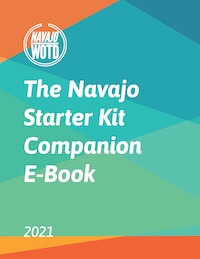díkwíí
how many
dih kwee
Literally: how many(?)
When you use the word díkwíí, you will be inquiring about the amount, or quantity, of certain objects. Using this Navajo word will create a question to which a response would be a number, or simply ‘I don’t know.’
For example:
Mark díkwíí bichidí? How many vehicles does Mark have?
[note: ‘bi’ in bichidí is attached in order to direct possession of the object to the third person; if possession of the object were directed to you or to me (assuming I am the speaker) then ‘bi’ would be replaced with ‘ni’ and ‘shi’ respectively; essentially, bichidí=his vehicle, nichidí=your vehicle, and shichidí=my vehicle.]
